| SMHRIC |
| March 25, 2021 |
| New York |
Visit here for related videos: https://www.youtube.com/user/ovormongolmin/videos
|
|
|
|
Inner Mongolia
TV advertisement: "Improve mutual interaction and mutual
assimilation of all ethnic groups to firmly inculcate the Chinese
nationality common identity."
(SMHRIC - 2021-03-24)
|
|
|
|
|
|
"Chinese Nationalities are Intimate
Like One Family", one of many TV programs recently launched in
Southern Mongolia to indoctrinate the "Chinese Nationality Common
Identity"(SMHRIC - 2021-03-24)
|
|
 |
|
|
Zaruud Banner No.1 Mongolian Middle School
already started its second round of training for "Inculcating
Chinese Nationality Common Identity" (SMHRIC - 2021-03-24)
|
|
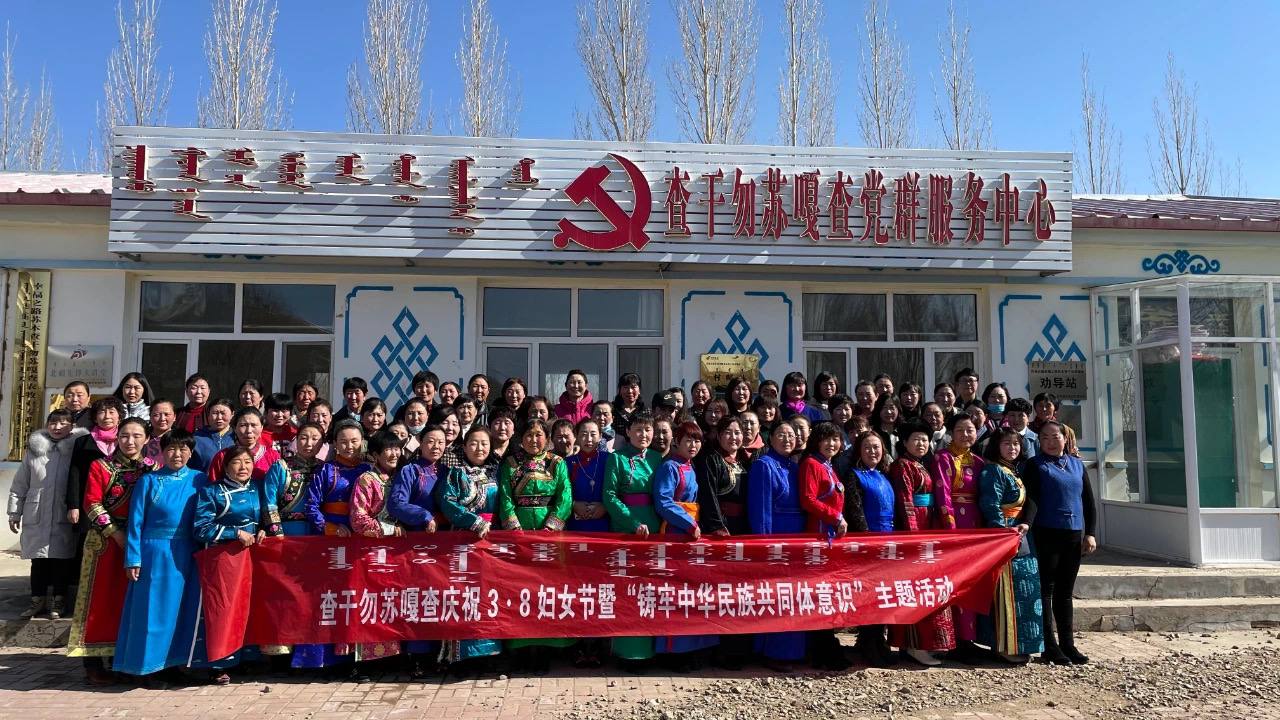 |
|
|
Mongolian herdswomen
were put to the training of "Inculcating Chinese Nationality Common
Identity" in Tsagaan-us rural community on the International Women's
Day (SMHRIC - 2021-03-24)
|
|
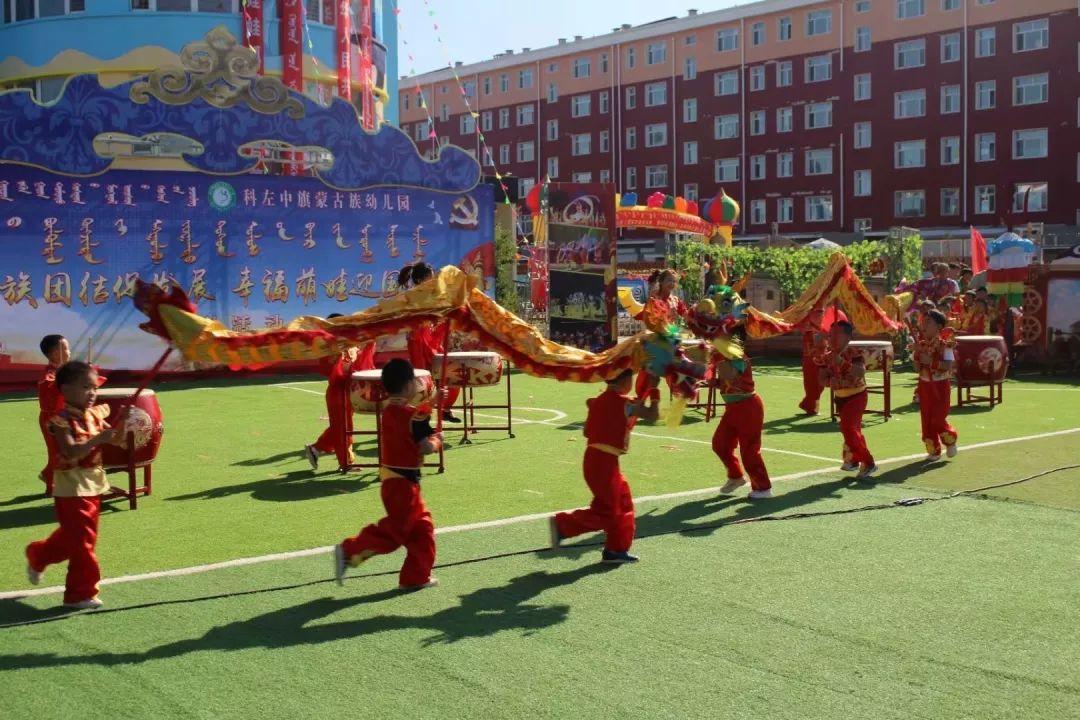 |
|
|
Mongolian kindergarteners are forced to learn
Chinese traditional performance - Dragon Dance (SMHRIC - 2021-03-24)
|
|
|
|
|
| Resistance continues. A poem in Mongolian is posted on the wall of an electric welding shop, rallying the Southern Mongolians to "boil to vanish instead of evaporating slowly." (SMHRIC - 2021-03-24) |
Following the crackdown on region-wide protests sparked by the Chinese Central Government’s aggressive policy of wiping out Mongolian-language education, China’s cultural genocide campaign is in full swing in Southern (Inner) Mongolia. The scope of the campaign has extended far beyond converting the medium of instruction from Mongolian to Chinese.
Beginning January 1, 2021, government mouthpieces, including the Inner Mongolia Radio and Television Station, has been ordered to replace Mongolian content with Chinese cultural programs in order to promote a “strong sense of Chinese nationality common identity.”
According to notices published by the Inner Mongolia Satellite TV Channel, these new programs include “Chinese Nationalities are Intimate Like One Family” (中华民族一家亲), “Great Lectures on Chinese Culture” (中华文化大讲), “Chinese Cultural Garden” (中华文化万花园) and “Chinese Great Dictionary” (“中华大辞典”).
One of the campaign’s official slogans, “Learn Chinese and become a civilized person,” has been used to publicly promote Chinese supremacy over the Mongolian language, culture and identity.
As a case in point, Chinese authorities hand-picked a Mongolian elementary-school student to host a campus broadcast aired by the Inner Mongolia TV Station. He begins his program with this admonishment: “I urge you to speak Chinese, write Chinese and become a civilized person.” The TV program goes on to urge the Mongolians that “Chinese is the common language to inculcate a strong sense of Chinese nationality common identity in the public.”
Children are not the only target subjected to this propaganda campaign. The Inner Mongolia TV Station report says that in the Ordos region Mongolian adults are similarly subjected to training programs focused on learning Chinese. In an effort to hasten the linguistic assimilation of the general populace of Southern Mongolia, official TV and radio broadcasts have begun airing Chinese-language learning courses such as “Follow Me to Learn Chinese,” a new program aired by the Inner Mongolia Television Station beginning December 8, 2020.
With official mouthpieces publicly advocating ethnic assimilation, the propaganda campaign sweeping across Southern Mongolia is widely considered by the Mongolians as another form of Cultural Revolution. Official slogans like the following are aired repeatedly by all radio broadcasts and TV channels: “Let us improve the mutual interaction, mutual exchange and mutual assimilation of all ethnic groups to firmly establish the Chinese nationality common identity.”
Ubiquitous in the region are political advertisements highlighting the importance of national unity and ethnic harmony, many of which specifically target Mongolian children. In a short TV cartoon called “All Ethnic Groups Unite Like Seeds of a Pomegranate,” a Mongolian young girl named Anar ( “pomegranate” in Mongolian), quotes one of Xi Jinping's speeches as she reads out the following monologue in Chinese:
“All ethnic groups unite like seeds of a pomegranate. Home is only one. Country is the Great Zhong Hua (China). We all belong to a single family with no division of you, I and others. Greetings! I am Anar from the Ordos Grassland, a young representative of Ordos-region ethnic unity and ethnic advancement. In the following days, I will be sharing with you my experience of ethnic unity work in the Ordos region. Today, in the vast territory of Ordos, we witness economic prosperity, social harmony, ethnic unity and omnipresent happiness. In this splendid grassland, there live 43 ethnic groups including the Mongolians, Chinese, Manchus and Hui. The masses of all ethnic groups are, hand in hand, heart to heart, marching together toward a more prosperous common future.
In schools, Mongolian students are subjected to military trainings and propagandist activities. Mongolian college students are forced to wear Mao-style uniforms and sing communist “red” songs to extol the greatness of China.
In a move to justify the total elimination of ethnic minority languages from the educational system, the Chinese National Congress announced recently that “education in minority languages as local legislations stipulated is unconstitutional,” according to the official newspaper of the Chinese Communist Party, People’s Daily. This apparently supersedes Article 4 of the Constitution of the People’s Republic of China that states that “All ethnicities have the freedoms and rights to use and develop their own spoken and written languages and to preserve or reform their own folkways and customs.”
Local authorities in the Inner Mongolia Autonomous Region reacted promptly to implement this directive. In Mongolian local schools, subjects touching on Mongolian culture and history are considered “underemphasizing the Chinese nationality common identity and deliberately overemphasizing the individual ethnic group’s ‘ethnic identity’ and ‘ethnic sentiment,’” and therefore are removed from curricula across the region. The English translation of the full text of the document on this policy, issued by the Inner Mongolia Autonomous Region Department of Education, is as follows:
Document Regarding the Suspension of Middle and Elementary School Local Curriculum Subjects Including “Inner Mongolian History and Culture” Across the Autonomous Region
To Inner Mongolia Educational Printing House, Hunan Educational Printing House, Geography Printing House, and Liaoning University Printing House:
Starting the fall of 2020, in accordance with the centralized deployment from the National Textbook Committee, our Department organized experts to carry out a special ideological investigation on local middle and elementary school textbooks and reference materials. At the same time, [the Department] invited national level experts to re-investigate the ideology of local textbooks including “Inner Mongolian History and Culture” (three editions in total), “Mongolian History,” “Hulun-boir History and Culture,” “Bor-tohai History and Culture,” and “Horchin History and Culture (Trial Edition).”
The investigation revealed that the aforementioned textbooks show varying degrees of redundancy in presenting historical events, lack of evidence, inconsistency with nationally compiled textbooks in chronically breaking down historical periods, underemphasizing the Chinese nationality common identity, deliberately overemphasizing the individual ethnic group’s “ethnic identity” and “ethnic sentiment,” lacking the full illustrations of the Chinese nationality common characteristics, and seriously overlapping certain contents.
In accordance with the opinions from experts at both the national and regional level, after the discussion organized by the Department’s party committee, here it is decided, starting the spring semester of 2021, to stop using currently used local textbooks in the region including “Inner Mongolian History and Culture” (three editions in total), “Mongolian History,” and “Bor-tohai History and Culture”; starting the fall semester of 2021, to stop using local textbooks including “Hulun-boir History and Culture” and “Horchin History and Culture (Trial Edition)” (one volume), and to remove these subjects from the Autonomous Region middle and elementary school local curriculum list.
Hereby informing by letter.Inner Mongolia Autonomous Region Department of EducationJanuary 8, 2021[See below for the original Chinese version]
The latest information received by the Southern Mongolian Human Rights Information Center suggests that the so-called “nationally-compiled textbook reform” pushes beyond the domain of elementary and middle schools, and into younger grade levels.
In a short written statement, a Mongolian parent said that “Kindergarteners are all taught in Chinese. From the situation of kindergartens, you can imagine how it looks like in schools.”
The parent adds that “Talking about ‘Mongolian culture’ is not allowed. It has to be called ‘Chinese grassland culture’ instead.”
Another Mongolian parent said in a written statement: “Horrific days are now starting. Our innocent toddlers are forced to learn in Chinese. It is so heart-breaking to look at the helpless eyes of our beloved toddlers who do not understand a single word when their Chinese teachers talk to them in Chinese.”
In an effort to completely block all avenues of Mongolian learning, the Inner Mongolia Autonomous Region Department of Education issued a document on January 9, 2021, “[banning] any school from gathering students and offering extracurricular learning courses or teaching new courses. [Also strictly prohibited are] middle and elementary school teachers...organizing or participating in any training organizations outside the campus, any paid make-up courses organized by teachers, parents and parents’ committees, [and the] inducing [of] students to participate in any paid make-up courses organized by teachers, parents, parents’ committees or others.” According to the Chinese official press Inner Mongolia News, the document adds that “introducing student sources and providing relevant information to any training organization outside the school campus is strictly prohibited.”
A viral video shows Mongolian students from different grades lined up outside their school, holding their blue traditional ceremonial scarves (khadag), waiting to take their last lesson in Mongolian, and saying goodbye to their Mongolian teachers.
Flagrant cultural annihilation is perhaps most visible in the series of arts and cultural performances organized by Chinese authorities for the Mongolian Tsagaan Sar, the traditional Mongolian new year. Peking operas have replaced Mongolian traditional art performances in TV programs across the region. In some programs, Mongolian traditional dances are converted to hybrid performances that exhibit in full the features of Chinese operas. The horse-head fiddle, a traditional Mongolian musical instrument, is played in concert with the suona, a distinctively high-pitched instrument often played in Chinese traditional music ensembles.
In one of the programs aired during the Mongolian Tsagaan Sar gala, a Chinese man in red Mongolian traditional clothes rattles bamboo clappers while presenting the Chinese traditional kuaibanr, a rhythmic and comic storytelling performance. The lyrics of the kuaibanr adapt a poem, featuring ancient nomads on the Mongolian Plateau, to include propagandist Chinese elements:
Sky is so blue, steppe is so vast, There flies the [Chinese] national flag deep in the grassland, So red is the flying national flag, So bright is it visible if you raise your head.
In addition to Mongolian arts and culture, sacred sites such as Oboo—a stone altar devoted to the worship of the Eternal Sky and local gods—are not spared from the Chinese cultural invasion. A photo sent from local Mongolians to the SMHRIC shows that a group of Chinese Yangge performers have appeared at an Oboo site to mock the Mongolian Oboo ritual.
On the official front, the Chinese Central Government sent a number of high-ranking officials to the regional capital of Hohhot to investigate why the authorities of the Autonomous Region failed to prevent the large-scale protest from happening in September. As expected, Mongolian officials and Mongolian educational workers were blamed for being “reluctant in implementing the new educational policy and for harboring narrow national sentiment.”
As a result, the Chinese government launched a region-wide intensive training campaign. According to the Inner Mongolia News official website, the first session of the “Region-wide Educational System Special Training for Firmly Inculcating the Sense of Chinese Nationality Common Identity” began on December 8, 2020. Although the exact details of the training and the total number of trainees remain unknown, the report confirmed that the three-phase training program would be completed by the end of March 2021.
According to recent news reports from Chinese official media, the “Training for Inculcating the Sense of Chinese Nationality Common Identity,” have already begun in rural Mongolian communities at the sum (“township”) and gachaa ( a collection of several villages) level across the Autonomous Region. Other regional and local news outlets revealed that the synchronized training sessions were held in all schools, colleges and universities throughout the Autonomous Region.
On March 2, 2021, the Bayan-hangai Gachaa Party Committee of Saihan-tal Township held a training session to “correctly understand the historical background and profound implication of inculcating the sense of Chinese nationality common identity,” according to the government website of Sunid Right Banner. The report adds that herders’ representatives were also in attendance. The Shuluun-huh Banner Government website also reported that from March 4 to 5, 2021, representatives from all gachaas and communities across the Banner had received the second round of training for “Inculcating the Sense of Chinese Nationality Common Identity.”
A 47-page internal document entitled “Propaganda Pamphlet for Inculcating the Sense of Chinese Nationality Common Identity to Push for the Usage of Nationally Compiled Textbook and National Common Language Education” was issued by the Inner Mongolia Autonomous Region Department of Education in January 2021. It is worth noting that the training pamphlet frequently quotes from Xi Jinping’s remarks made in Xinjiang where reportedly more than two million Uyghurs were put into what Chinese authorities called “training schools.” The document begins by quoting Xi Jinping's statement made during his visit to Xinjiang Uyghur Autonomous Region in 2014: “The Chinese cannot separate from national minorities, national minorities cannot separate from the Chinese, and national minorities cannot separate from each other either.”
According to a trainee who asked not to be identified, all the lectures, discussions, reflections and quizzes are centered around this document. “Full of Xi Jinping’s quotes,” the trainee said, “this pamphlet is the bible to this new cultural genocide movement, equivalent to Mao’s red book to the Cultural Revolution.”
Continuing to quote Xi Jinping’s remarks, the pamphlet states that “The masses must act to communicate and train together to take up the work of interfusing the feelings, to strive hard to create a social condition of living together, learning together, working together and enjoying together, to urge all ethnic groups to accept the great mother country, Chinese nationality, Chinese culture, Chinese Communist Party and the socialism with Chinese characteristics.” The pamphlet also warns Southern Mongolians that “the wrong path of narrow nationalism can easily lead to the return of separatist tendency.”
Despite the widening eradication of Mongolian language, culture and identity, and the intensifying indoctrination of Chinese supremacy, many Southern Mongolians remain disobedient. The following poem, written in Mongolian on a large sign hung on the wall of an electric welding shop in Shiliin-hot City, is an apparent protest against the ongoing cultural genocide in Southern Mongolia:
“We prefer a burning death over a lukewarm living, Why must we stay alive bending our backs? Why must we live an undignified life? If we must burn, let us set ablaze to finish ourselves instead of flickering weakly If we must disappear, let us boil to vanish instead of evaporating slowly.
Undeterred, voices of defiance continue. Elsewhere on the streets of Southern Mongolia, signs like “Save Our Mother Tongue” are found in visible places such as bumper stickers, windows and the trunks of cars and motorcycles. Coded messages, poems and songs are circulated through WeChat messages, urging fellow Mongolians to never give up—while yearning for the ultimate collapse of the Chinese colonial regime.
Despite the authorities’ outlawing of teaching and learning of Mongolian, volunteers are offering online courses to teach Mongolian language, history and culture through social media channels available in the region. Some rally Southern Mongolian parents to send their children to the independent country of Mongolia to receive an education in Mongolian.
Protesting the intensifying indoctrination of “Chinese Nationality Common Identity” through TV broadcasts, many Southern Mongolian families stopped watching TV altogether.
“Life went on for thousands of years without TV,” a Mongolian parent told the SMHRIC, adding that her family and friends had unplugged their TVs months ago. “They might take away our culture and language. But they cannot take away our soul and mind. We must overcome this hardship. We believe nothing lasts forever including this difficult time.”
Visit here for related videos: https://www.youtube.com/user/ovormongolmin/videos
|
|
|
Trashing its own
laws and
regulations in
the IMAR, the
Chinese
Government says
these laws and
regulations are
a "manifestation
of narrow
nationalism that
must be
corrected". (SMHRIC
- 2021-02-24)
|
|
|
|
According to the
IMAR
authorities,
their very own
initial policy
of "Five No
Change"
including "no
changes to the
existing
bilingual
educational
system" is
"incorrect,
inaccurate and
inconsistent
with the
requirement from
the Central
Government".
Therefore, "the
policy will no
longer be
valid". (SMHRIC
- 2021-03-24)
|
|
|
|
"Pushing for
nationally
compiled
textbooks and
usage of
national common
language is a
political
responsibility.
It is the
touchstone for
'maintaining two
stabilities',"
according to the
IMAR
authorities. (SMHRIC
- 2021-03-24)
|
|
|
|
"Document Regarding the
Suspension of Middle and
Elementary School Local
Curriculum Subjects
Including “Inner
Mongolian History and
Culture” Across the
Autonomous Region" (SMHRIC
- 2021-03-24)
|
|
|
|
"Party
secretaries of
Mongolian
schools must be
Chinese;
Mongolian
schools must
raise national
flag every
morning; the
complete
conversion of
Mongolian with
Chinese as
medium of
instruction will
be concluded
ahead of the
original plan;
Mongolian
language TV
broadcasts are
required to air
multiple new
programs to
promote Chinese
culture; All
music, art
performances and
news programs
from the
independent
country of
Mongolia will be
completely
banned,"
according to a
complaint from
Southern
Mongolia. (SMHRIC
- 2021-03-24)
|
|
|
|
"Information is
completely
blocked.
Kindergarteners
are all taught
in Chinese.
From the
situation of
kindergartens,
you can imagine
how it looks
like in schools.
Talking about
‘Mongolian
culture’ is not
allowed. It has
to be called
‘Chinese
grassland
culture’
instead," a
Mongolian parent
complained. (SMHRIC
- 2021-03-24)
|
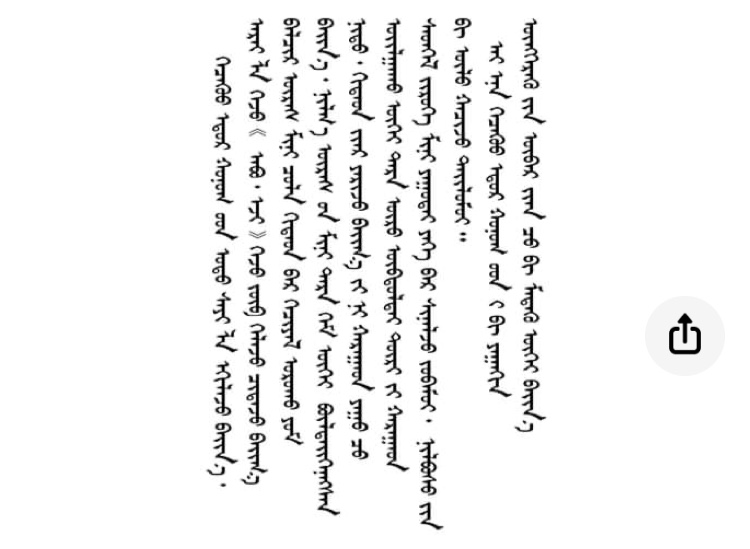 |
|
"Horrific days are now starting. Our innocent toddlers are forced to learn in Chinese. It is so heart-breaking to look at the helpless eyes of our beloved toddlers who do not understand a single word when their Chinese teachers talk to them in Chinese," another Mongolian parent said. (SMHRIC - 2021-03-24)
|
|
|
|
Inner Mongolia
TV new program:
"Chinese Great
Dictionary" (SMHIRC
- 2021-03-24)
|
|
|
|
Inner Mongolia
TV new program:
"Chinese
Cultural Garden"
(SMHIRC -
2021-03-24)
|
|
|
|
Inner Mongolia
TV new program:
"Great Lectures
on Chinese
Culture" (SMHIRC
- 2021-03-24)
|
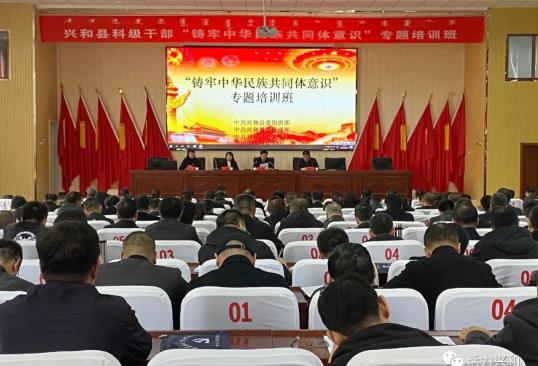 |
|
"Special Training for Inculcating the Sense of Chinese Nationality Common Identity" for county bureau level cadres.
|
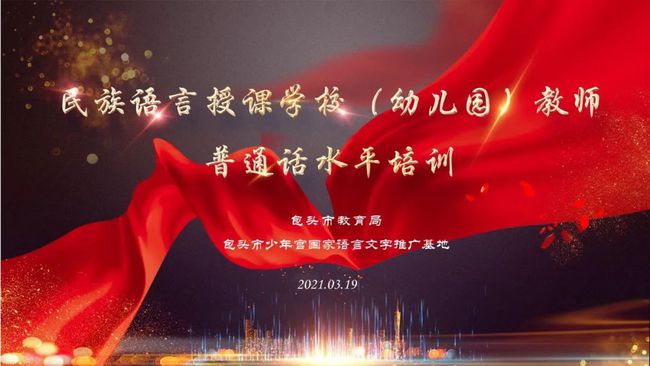 |
|
"Mongolian Teaching School (Kindergarten) Teachers' Training to Improve the Chinese Language Competence" in Bogot City of Southern Mongolia.
|
|
|
|
Mongolian students of elementary school must receive PLA training to have a strong sense of "Chinese nationality common identity" (SMHIRC - 2021-03-24)
|
|
|
|
Military
training, red
song and red
culture for
college students
to "inculcate
the sense of
Chinese
nationality
common identity"
(SMHRIC -
2021-03-24)
|
|
|
|
"Gentle
reminder: Speak
Chinese in
public." Ads
like this are
found every
corner of
Southern
Mongolia, urging
Mongolians to
speak Chinese (SMSHRIC
- 2021-03-24)
|
|
|
| Chinese Yangge performers have appeared at an Oboo site to mock the Mongolian Oboo ritual (SMHRIC - 2021-03-24) |
Visit here for related videos: https://www.youtube.com/user/ovormongolmin/videos





 Beyond
Great Walls: Environment, Identity, and Development on the Chinese
Grasslands of Inner Mongolia
Beyond
Great Walls: Environment, Identity, and Development on the Chinese
Grasslands of Inner Mongolia China's
Pastoral Region: Sheep and Wool, Minority Nationalities, Rangeland
Degradation and Sustainable Development
China's
Pastoral Region: Sheep and Wool, Minority Nationalities, Rangeland
Degradation and Sustainable Development The
Ordos Plateau of China: An Endangered Environment (Unu Studies on
Critical Environmental Regions)
The
Ordos Plateau of China: An Endangered Environment (Unu Studies on
Critical Environmental Regions)